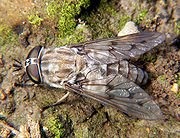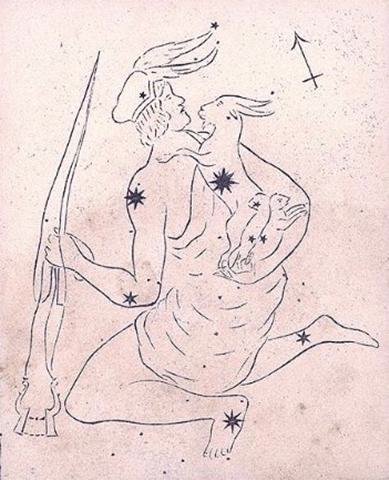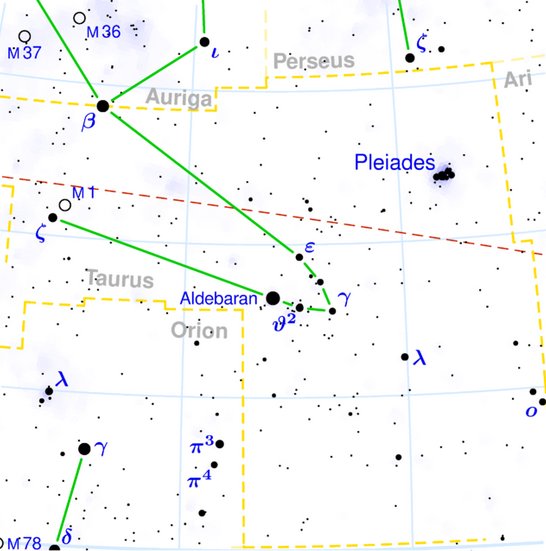On Hawaii the winter solstice was preceded by the cycle of
Lono (Rogo):
... The correspondence between the winter
solstice and the kali'i rite of the Makahiki is
arrived at as follows: ideally, the second ceremony of 'breaking
the coconut', when the priests assemble at the temple to spot
the rising of the Pleiades, coincides with the full moon (Hua
tapu) of the twelfth lunar month (Welehu). In the
latter eighteenth century, the Pleiades appear at sunset on 18
November. Ten days later (28 November), the Lono effigy
sets off on its circuit, which lasts twenty-three days, thus
bringing the god back for the climactic battle with the king on
21 December, the solstice (= Hawaiian 16 Makali'i). The
correspondence is 'ideal' and only rarely achieved, since it
depends on the coincidence of the full moon and the crepuscular
rising of the Pleiades ...
It began 23 days before December 21. In the C text we have
counted 16 days from December 5 (*259) - at tagata rogo - to December 21:
 |
 |
 |
 |
 |
|
Ca3-21 (68 + 4) |
Ca3-22 (365 / 5) |
Ca3-23 (4 + 10 weeks) |
Ca3-24 (75) |
Ca3-25 (68 + 8) |
|
tagata tuu rima ki
ruga |
te maitaki |
te henua |
Rei hata ia |
tagata rogo |
Hata. 1.
Table, bureau. P Pau.: afata,
a chest, box. Mgv.: avata, a
box, case, trunk, coffin. Mq.:
fata, hata, a piece of
wood with several branches serving
as a rack, space, to ramify, to
branch; fataŠ, hataŠ,
stage, step, shelf. Ta.: fata,
scaffold, altar. 2. Hakahata,
to disjoint; hakahatahata, to
loosen, to stretch. P Pau.: vata,
an interval, interstice. Mgv.:
kohata, the space between two
boards, to be badly joined;
akakohata, to leave a space
between two bodies badly joined;
hakahata, to be large, broad,
wide, spacious, far off. Mq.:
hatahata, fatafata,
having chinks, not tightly closed,
disjointed. Ta.: fatafata,
open. 3. Hatahata, calm,
loose, prolix, vast. Mgv.:
hatahara, broad, wide, spacious,
at one's ease. Ta.: fatafata,
free from care. Mq.: hatahata,
empty, open. 4. Hatahata,
tube, pipe, funnel. Churchill. ...
The division into quarters of a
28-series can be applied to the main
phases of the moon ... The separate
subgroup (29 makere - 30
hata) consists of the names of
two types of cockroaches, but in
related eastern Polynesian languages
these names can also be explained on
a different level. MAO. makere,
among others, 'to die', and whata,
among others, 'to be laid to rest on
a platform', deserve special
attention. The theme hinted at is
one of death and burial. In our
scheme they occur at just that time
when the moon 'has died'!
.jpg)

... Teke said
to Oti, 'Go and take the hauhau
tree, the paper mulberry tree,
rushes, tavari plants, uku koko
grass, riku ferns, ngaoho
plants, the toromiro tree, hiki
kioe plants (Cyperus vegetus),
the sandalwood tree, harahara
plants, pua nakonako plants,
nehenehe ferns, hua taru grass,
poporo plants, bottle gourds (ipu
ngutu), kohe plants,
kavakava atua ferns, fragrant
tuere heu grass, tureme grass (Dichelachne
sciurea), matie grass, and
the two kinds of cockroaches
makere and hata.' Oti
and all his assistants went and
took the hauhau tree with them.
All kinds of things [te huru
o te mee] (i.e., plants) and
insects [?] were taken along.
[E:69]
Oti said to
his assistants [toona titiro],
'Take all the things (i.e., the
plants) on board the canoe and
leave them there!' The men took
[he mau te tangata] them,
arrived, and left all of them on
board the canoe.
[E:68 (sic!)]
|
|
CLOSE TO THE SUN: |
|
ι Ophiuchi (255.3),
GRAFIAS
= ζ Scorpii
(255.4)
*214.0 = *255.4 - *41.4 |
κ Ophiuchi (256.2), ζ Arae (256.5), ε
Arae (256.8),
CUJAM (Club) = ε Herculi
(256.9) |
no star listed (257) |
17h (*258.7)
ARRAKIS = μ Draconis
(258.7) |
Mula-19 (The Root)
SABIK (The Preceding One) = η Ophiuchi
(259.7),
η
Scorpii (259.9) |
 |
|
Dec 1
(335) |
2 (2
* 168) |
3 |
4 |
5 |
|
N |
Jan |
Febr |
March |
April |
May |
June |
July |
Aug |
Sept |
Oct |
Nov |
Dec |
N |
|
S |
July |
Aug |
Sept |
Oct |
Nov |
Dec |
Jan |
Febr |
March |
April |
May |
June |
S |
|
|
CLOSE TO THE FULL MOON: |
|
π4
Orionis (72.1),
οĻ
Orionis (72.4),
π5
Orionis (72.8)
*31.0 = *72.4 - *41.4 |
πĻ
Orionis (73.0),
ο≤
Orionis (73.4),
HASSALEH
=
ι
Aurigae
(73.6),
π6
Orionis (73.9)
*32.0 = *73.4 - *41.4 |
ALMAAZ (The Male Goat) = ε Aurigae
(74.7),
HAEDUS I
=
ζ
Aurigae
(74.8) |
HAEDUS II = η Aurigae
(75.9) |
5h (*76.1)
ε
Leporis (76.0),
CURSA (Footstool) = β Eridani
(76.4),
λ Eridani (76.7)
*35.0 = *76.4 - *41.4 |
 |
|
June
1 (152) |
2 |
3 |
4 |
5 |
 |
 |
 |
 |
|
Ca4-17 |
Ca4-18 |
Ca4-19
(95) |
Ca4-20 |
|
Dec 22 |
23 |
CHRISTMAS
EVE |
25 (336 + 23) |
|
CLOSE
TO THE FULL MOON: |
|
June 22 |
23 |
CANOPUS |
25 (168 + 8) |

... The Pythagoreans make
Phaeton fall into Eridanus, burning
part of its water, and glowing still at the
time when the Argonauts passed by. Ovid
stated that since the fall the Nile hides
its sources. Rigveda 9.73.3 says that the
Great Varuna has hidden the ocean. The
Mahabharata tells in its own style why the
'heavenly Ganga' had to be brought down. At
the end of the Golden Age (Krita Yuga)
a class of Asura who had fought
against the 'gods' hid themselves in the
ocean where the gods could not reach them,
and planned to overthrow the government. So
the gods implored Agastya (Canopus,
alpha Carinae = Eridu) for help. The great
Rishi did as he was bidden, drank up the
water of the ocean, and thus laid bare the
enemies, who were then slain by the gods.
But now, there was no ocean anymore!
Implored by the gods to fill the sea again,
the Holy One replied: 'That water in sooth
hath been digested by me. Some other
expedient, therefore, must be thought of by
you, if ye desire to make endeavour to fill
the ocean ...
 |
Should we instead count from December 3 (4 * 84 + 1) - when ε
Aurigae had been at the Full Moon - there would be 16 + 2 = 18 days
to December 21, which does not fit with the customs on Hawaii.
But we can assume they in 'the latter
eighteenth century' could have been influenced by the 'crooked'
Gregorian calendar. For the Gregorian spring equinox changed the
earlier Julian March equinox to a position 4 days earlier as
observed against the background of the fixed stars. And the
December solstice was consequently changed from December 25 to
December 21.
From December 3 (4 * 84 + 1) - when ε Aurigae (Almaaz, the
Male Goat) was close to
the Full Moon - there would be 18 + 4 = 22 days to December 25.
Much evidence indicate we should count from the maitaki day
at the right foot of the Charioteer in December 2 (336 = 359 -
23).

Consequently the '2nd ceremony of breaking of the coconut' would have arrived
at right ascension day *63:
|
 |
|
 |
|
 |
 |
6 |
 |
|
HYADUM
I |
HASSALEH |
BETELGEUZE |
Ca4-13 |
Ca4-20 (96) |
| γ
Tauri (*63.4) |
ι Aurigae
(*73.6) |
α Orionis (*88.3) |
Dec 18 |
CHRISTMAS DAY |
|
32 |
"May 15 (500) |

Here was probably the missing type of banana, he ri'o:
... the creators of Manuscript E enumerated only 5 species of
banana shoots although there were 6 such on Easter Island ...
|
he maika |
|
- |
origo |
he ri'o |
|
1 |
*1 |
he koro tea. |
a Teke. a Oti. |
|
2 |
*2 |
he hihi. |
|
3 |
*3 |
he pukapuka. |
|
4 |
*4 |
he pia. |
|
5 |
*5 |
he nahoo. |
|
Maika.
Banana (Musa sapientum).
Ancient varieties were called ri'o, hihi,
korotea, pia, pukapuka, naho'o. Vanaga. Meika,
banana. Pau., Mgv.: meika, id. Mq.: meika,
meia, id. Ta.: meia, id.
Churchill. |
|
FEBR 26 (57 = 80 -
23) |
21 |
MARCH 20 (*364) |
 |
 |
|
Gb8-8 → 64 |
Gb8-30 (242 = 2 * 11
* 11) |
|
BHARANI (*41) |
HYADUM I (*63) |
|
May 1 (121) |
May 23 (143 = 135 + 8) |
|
"March 21 (0h) |
"April 12 (102) |
|
23 (= 359 - 2 * 168) |

|


.jpg)









